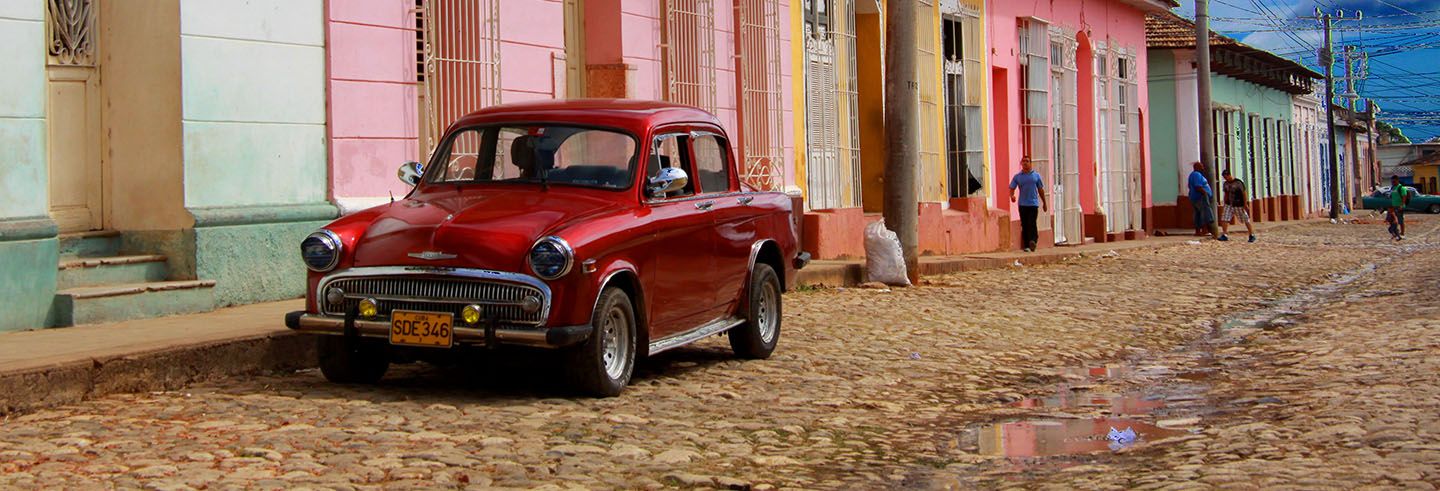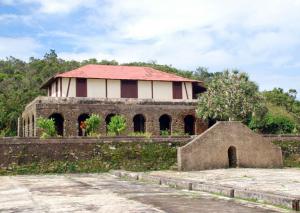

Cafetal La Isabelica, Santiago de Cuba
Visit the Cafetal La Isabelica to learn how an old coffee plantation worked in Santiago de Cuba
The Cafetal La Isabelica in La Gran Piedra, Santiago de Cuba, is the only representative museum of French coffee plantations in Cuba declared a National Monument and World Heritage Site by Unesco.
After the revolution in Haiti, multitudes of French settlers arrived on the Cuban shores seeking salvation. One of them is Víctor Constatan who decides to found a corn, cocoa and coffee plantation taking advantage of the fertility of the territory. The coffee farm built with stone, wood and clay, served as a home and production area and took 10 years to build. After so much effort in the war of independence, the liberating Army would burn it, thus ending Victor's work.
In 1961 it became a museum with 17 exhibition rooms and more than 598 pieces that tell the story of those French who had to emigrate from Haiti. Many of them were found in archaeological sites near the estate and others have been donated by descendants of French immigrants. The construction is divided into two floors, on the first floor you can find the tool room that includes agricultural and domestic material and used in punishments against slaves, the coffee warehouse, machine room, kitchen, pantry and coffee drying rooms. On the upper floor was the house of the lords and outside are the mill, lime kiln, bathroom, cistern and barrack for the household slaves. In this museum, thanks to its magnificent restoration, it is possible to know in depth how the production of a coffee plantation was then and all that it entails.
Interactive map:
Santiago de Cuba
What to see:
- Santiago de Cuba Cathedral
- Parque Céspedes (Céspedes Park)
- Ayuntamiento (City Hall)
- Balcón de Velázquez (Balcony of Velázquez)
- Iglesia de Nuestra Señora del Carmen (Church)
- Iglesia de San Francisco (San Francisco Church)
- Casa del Estudiante de la Trova
- Palacio de Gobierno Provincial (Gobierno Provincial Palace)
- Pasos Padre Pico
- Plaza de Dolores
- Iglesia de Nuestra Señora de los Dolores (Church)
- Plaza de Marte
- Tivoli
- Parque Alameda
- Fábrica de Tabacos César Escalante (César Escalante Cigar Factory)
- Iglesia de Santo Tomás (Santo Tomás Church)
- Cuartel Moncada
- Abel Santamaría Historical Complex
- Palacio de Justicia (Palace of Justice)
- Vista Alegre
- African Cultural Center "Fernando Ortiz"
- Palacio de Pioneros (Palace)
- Parque Zoológico (Santiago de Cuba Zoo)
- Cementerio Santa Ifigenia (Santa Ifigenia Cemetery)
- Loma de San Juan
- Castillo de San Pedro del Morro (Castle)
- Cayo Granma
- Ermita de San Rafael (San Rafael Chapel)
- Caleta La Estrella
- Jardín de los Helechos (Fern garden)
- Calle de la Santería (Santeria street)
- Casa de las Tradiciones (House of Traditions)
- Puerto Boniato
- Real Cárcel de Santiago de Cuba (The Royal Jail)
Museums:
- Museo del Ron (Ron Museum)
- Museo de la Lucha Clandestina
- Museo del Carnaval (Carnaval Museum)
- Museo Municipal Emilio Bacardí Moreau (Provincial Museum Emilio Bacardí Moreau)
- Casa del Caribe (Caribbean House)
- Museo de Imagen (Image Museum)
- Museo de la piratería (Piracy Museum)
- Casa Museo de Frank y Josue País (Frank and Josue País House Museum)
- Museo Casa Natal de Antonio Maceo (Antonio Maceo Birthplace Museum)
- Museo Tomás Romay (Tomás Romay Museum)
- Casa Natal de José María de Heredia (Birthplace of José María de Heredia)
- Museo Arquidiocesano (Archdiocesan Museum)
- Casa De Diego Velázquez
- Casa de la Cultura Miguel Matamororos (House of Culture Miguel Matamoros)
Parque Baconao (Baconao Park)
- La Gran Piedra
- Cafetal La Isabelica
- Baconao Aquarium
- Prado de las Esculturas
- Botanical Garden of Santiago de Cuba
- Valle de la Prehistoria
- Los Mamoncillos Artistic Communities
- Museum of Natural History
- Museo Nacional de Transporte Terrestre (National Museum of Land Transport)
- Mesoamerican Exhibition
- Laguna Baconao (Baconao Lagoon)
- Playa Cazonal (Cazonal Beach)
- Playa Daiquiri (Daiquiri Beach)
- Playa Baconao (Baconao Beach)
Other nearby destinations:
Why "Cuban Travel Agency"?
"Cuban Travel Agency" is part of the Visitar Cuba project, an organization of Cuban agencies whose objectives are:
- ✓ Disseminate Cuba, its culture and its heritage.
- ✓ Promote sustainable tourism.
- ✓ Support the local economy, prioritizing direct contact with Cuban agencies.
- ✓ Offer budgets without commitment and without cost, from the hand of Cuban experts.
Travel agencies and Tour Operators
If you are an agency or tour operator and you are looking for help to create trips to Cuba, trust our expert hands, we offer special prices.
© www.CubanTravelAgency.Org - All rights reserved.



